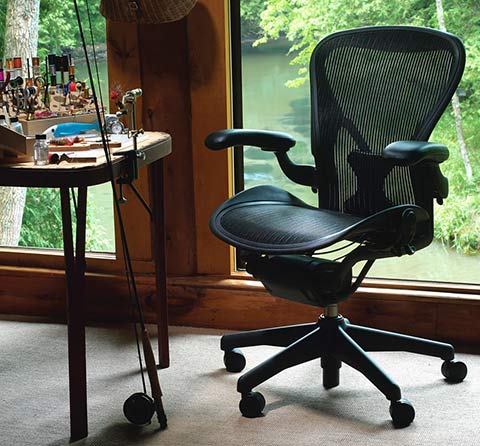What makes for a great office chair? Its proportional seating, adjustability, lumbar support, in other words how well it supports you throughout your workday.
These are the elements of an ergonomic seat, and they are essential to picking the right chair. Whether you work in a cubicle, behind a large desk in a corner office, or in an at-home office, the following tools can help you maximize your comfort while you are working, studying, or just surfing the net. (Source: http://www.wikihow.com/Select-an-Ergonomic-Office-Chair)
Kicking Back: Your Chair’s Recline-ability
If the chair back is too stiff (like wood) it will likely be uncomfortable before the day is over. A chair that can move is able to support your back, legs, and hips in various positions. Just as our spines do not move in only one direction, the best chair is one that mimics the natural motion of a person’s. In an extensive study, researchers found that certain ergonomic office training chairs actually improved productivity by 17.8 percent. Ideally, you should be able to recline and see your work without straining your eyes, shoulders, or arms. By choosing a chair that supports easy reclining, you can reduce pressure on the spine and sitting bones.
The Parallel Effect: Chair Height
Chair height is a bit like the beds in the story “Goldie Locks and the Three Bears”. The first bed was too short, the other too long, the last one was just right. If a chair is too short it can actually cause blood circulation to be constricted. If a chair is too long, it can create undue pressure on your sitting bones. The idea behind seat height is to provide the correct relationship between your body and your work surface. Feet should be flat, either on a footrest or on the floor, and the thighs should be parallel to the ground. The same goes for shoulders; they should be parallel to the work surface. If the seat is too high or too low it can cause pressure behind the knee or on the sitting bones.
Warp Seat: Seat Depth
Like a throne, the seat must be truly suited to the individual’s body. The length of the seat is crucial to back support. If you find yourself propping your body forward, the seat may be too long. This can lead to back and leg strain. Having an adjustable seat depth can prevent this by making it adjustable to your particular proportions. You should have three to four fingers width distance between the front edge of the seat and the back of your knees, while seated, as a rule of thumb.
Armrests
Proper support for arms is important both while active and during resting periods. A chair with adjustable armrests can allow you to have continuous support, but it must be noted that the choice is not merely whether or not the height is comfortable, but also, whether or not it supports freedom of depth and pivot of your armrest. Ideally, the arms can comfortably rest on armrests or on a work surface, without requiring you to hunch the shoulders. Forearms should be parallel to the floor when you are at work.
Lumbar Support
Office workers often can identify they have the “wrong chair” through the symptom of lower back pain. To make sure your back is properly supported, the chair should mimic your spine, which is aided by having a chair with adjustable lumbar systems. Remember that an ergonomic office chair could end up saving you money in the future from having to visit the chiropractor due to back pains caused from a poorly constructed chair. If you’re looking for an ergonomic office chair, be sure to check out these reputable sellers: Amazon, Staples, and Solutions Office Interiors.









